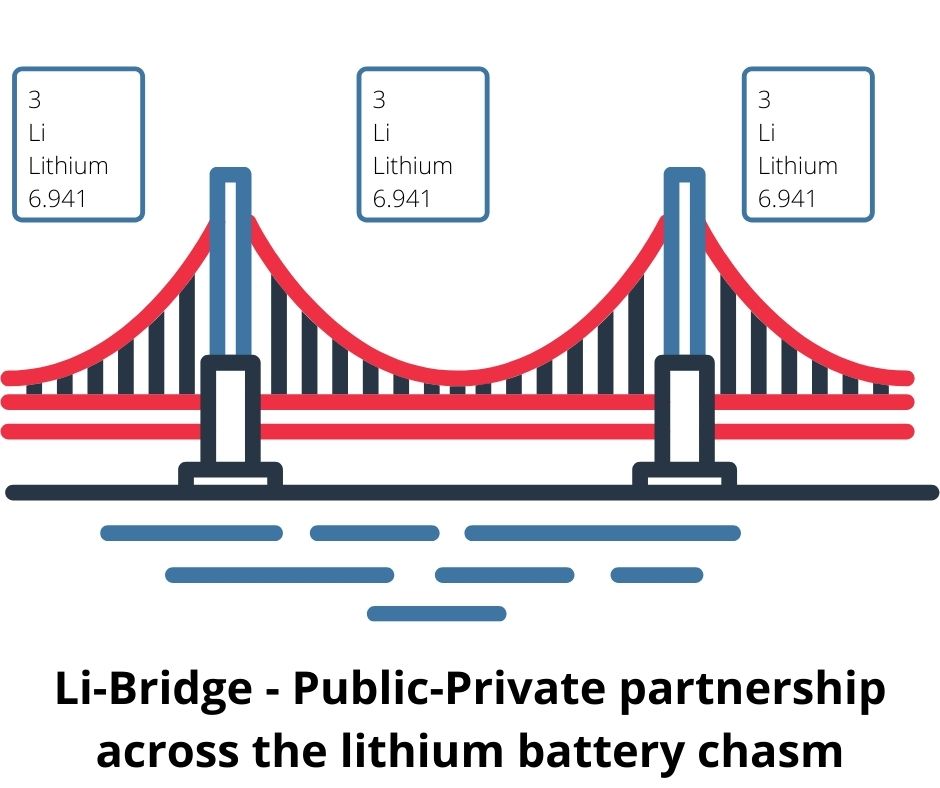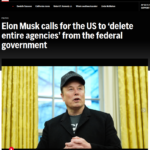As we noted yesterday, the USA has only 8% of the worlds lithium battery manufacturing capacity, and China has over 75% of that capacity. Since there is an over-arching need to electrify transportation and the entire energy system, lithium batteries are a key product, and China is currently in charge of the market. Weren’t policy planners asleep over the last few decades as the majority of the worlds manufacturing base relocated to China?
Yesterday we talked about the National Blueprint for Lithium Batteries, which is a policy strategy document outlining how the USA might possibly manage to gain a foothold of a domestic supply chain for lithium batteries. Today, Argonne National Labs held a kick-off meeting for Li-Bridge (project site![]() ), which is a consortium of national laboratories and corporate interests. The goal is exactly what’s in the National Blueprint document, meaning improving the status of domestic research and manufacturing of advanced lithium batteries.
), which is a consortium of national laboratories and corporate interests. The goal is exactly what’s in the National Blueprint document, meaning improving the status of domestic research and manufacturing of advanced lithium batteries.
The Li-Bridge project is being led by Argonne National Labs, and involves work at PNNL (Richland WA), LBNL (Berkeley CA), NREL (Golden CO), LLNL (Livermore CA), ORNL (Oak Ridge TN), SLAC (Menlo Park CA), and BNL (Upton NY). A list of project areas to be worked on by these labs were released, including:
- Solid electrolytes – including ceramic and sulfur
- Extreme fast charging
- “EV’s @ Scale” which is about addressing technical challenges to widespread adoption of electric vehicles
- Connectivity for automated driving
I get that solid electrolytes have a higher energy density, but I understood they don’t deal well with vibration like one gets on board a vehicle. Why are solid electrolytes the only topic considered for a project meant to improve lithium batteries for vehicles?
The consortium is to include involvement from industry. It was explained that further funding opportunities will be available for industry. The call included representatives from three industry consortiums:
- NAATBatt
 — promotes development and commercialization of electrochemical energy storage – batteries in other words.
— promotes development and commercialization of electrochemical energy storage – batteries in other words. - New York Battery and Energy Storage Technology Consortium (NY-BEST)
 – Works on energy storage issues for NY State. I understand part of their incentive came from wide-spread power outages after a hurricane slammed the NY City area a decade ago.
– Works on energy storage issues for NY State. I understand part of their incentive came from wide-spread power outages after a hurricane slammed the NY City area a decade ago. - New Energy Nexus
 – Non-profit which facilitates connection between government programs world-wide and the green clean energy industry
– Non-profit which facilitates connection between government programs world-wide and the green clean energy industry
Visions discussed during the meeting include:
- The need for more Gigafactories – meaning, large scale battery manufacturing factories
- Avoiding supply chain disruptions due to over-reliance on China
- Training and retraining workers for battery based systems
- The “Great Convergence in the Energy Industry”, meaning that in the past there were different fuels and technologies used in stationary energy supply and mobile energy supply. But now both industries are converging towards the same thing, namely renewable energy and energy storage.
- A fully decarbonized electric grid requires energy storage capacity equal to the renewable energy generation capacity
- Changing the pattern where USA companies develop a product, then go overseas (China) to manufacture it
- The scale-up of manufacturing batteries for vehicles is steeper than for stationary storage systems. That means, the stationary storage market will benefit from rapid increase in battery manufacturing capacity required for vehicles.
The representative from NAATBatt really did use the word GigaFactory. That is a Tesla-specific word, since that is the moniker Tesla has attached to some of their factories. Does the industry really want to use this word across the board? And do they have the same meaning for this word that Tesla is using?
The bottom line question is whether this approach will create the desired result? I’m not convinced that Public Private Partnerships are the best choice.
Tesla, for example, went way ahead of the industry, building huge battery factories when everyone thought they were nuts, and so forth. Did Tesla need any government support to get moving forward? Before you point out the ATVM loan Tesla received over 10 years ago, they paid that off a long time ago. Since then, Tesla has been making their own decisions and investments, without requiring a government to tell them what to do or wait for government funding.
But, here we are, the government hoping to lead industry in revolutionizing the battery industry in the USA. What could go wrong?
The one concrete practical bright spot discussed in the meeting is what they called Lithium Valley. This is an area near the Salton Sea in Southern California that is both a huge geothermal energy resource, and a huge resource for minerals like lithium, potassium, zinc, manganese, iron and rubidium. The California Energy Commission![]() has a project supporting development of the area. A company, Controlled Thermal
has a project supporting development of the area. A company, Controlled Thermal![]() , is making big claims about their ability to exploit this resource.
, is making big claims about their ability to exploit this resource.
In terms of lithium battery production, they’re claiming a resource which is the next huge source for lithium in the world, with a production capacity of over 300,000 tonnes per year. Additionally, geothermal capacity is over 1100 megaWatts.
If these resource estimates are accurate, this and other lithium resources located in the USA could prove crucial to the success of the Li-Bridge plan.
- The USA should delete Musk from power, Instead of deleting whole agencies as he demands - February 14, 2025
- Elon Musk, fiduciary duties, his six companies PLUS his political activities - February 10, 2025
- Is there enough Grid Capacity for Hydrogen Fuel Cell or Battery Electric cars? - April 23, 2023
- Is Tesla finagling to grab federal NEVI dollars for Supercharger network? - November 15, 2022
- Tesla announces the North American Charging Standard charging connector - November 11, 2022
- Lightning Motorcycles adopts Silicon battery, 5 minute charge time gives 135 miles range - November 9, 2022
- Tesla Autopilot under US Dept of Transportation scrutiny - June 13, 2022
- Spectacular CNG bus fire misrepresented as EV bus fire - April 21, 2022
- Moldova, Ukraine, Georgia, Russia, and the European Energy Crisis - December 21, 2021
- Li-Bridge leading the USA across lithium battery chasm - October 29, 2021














